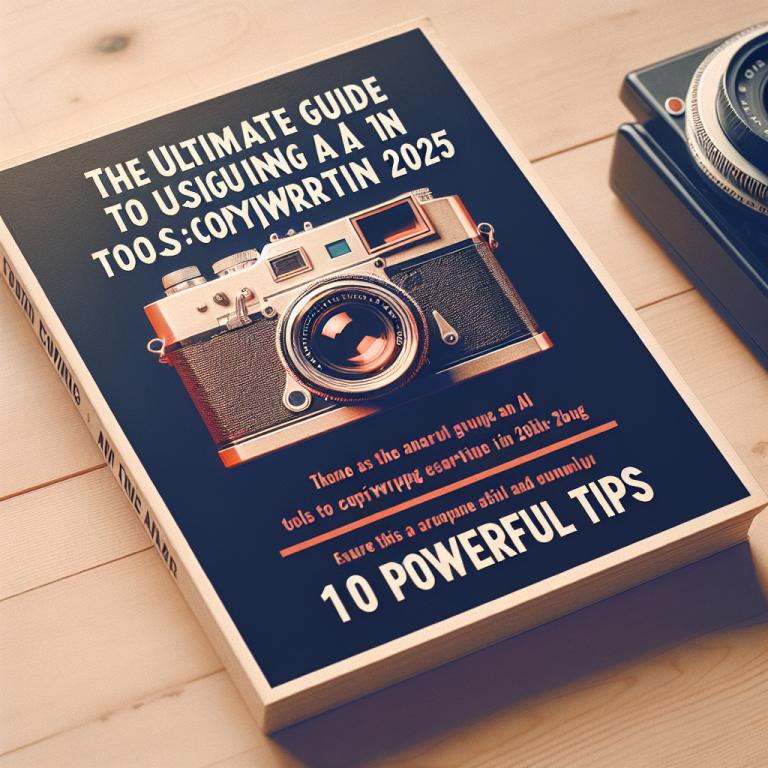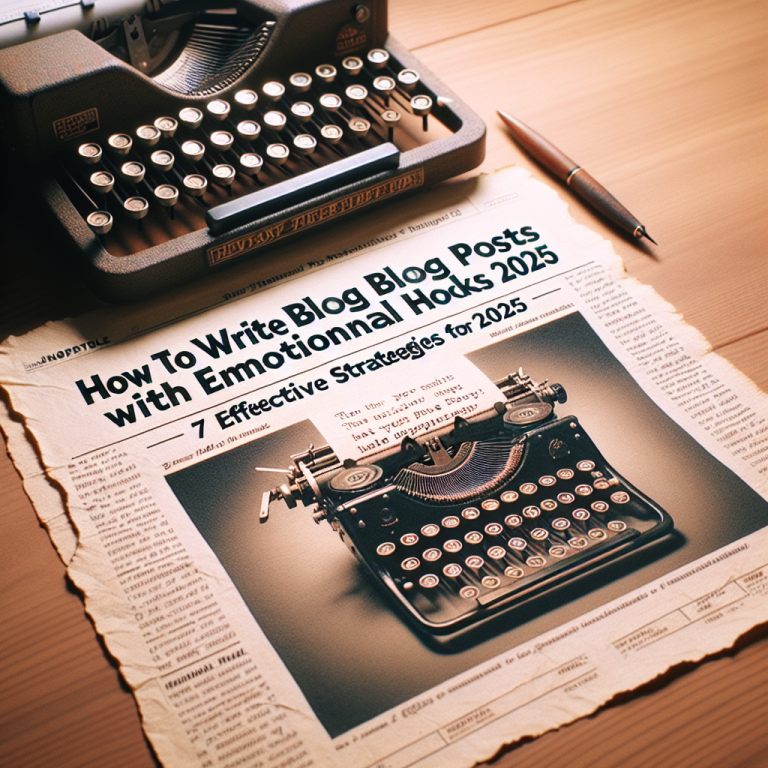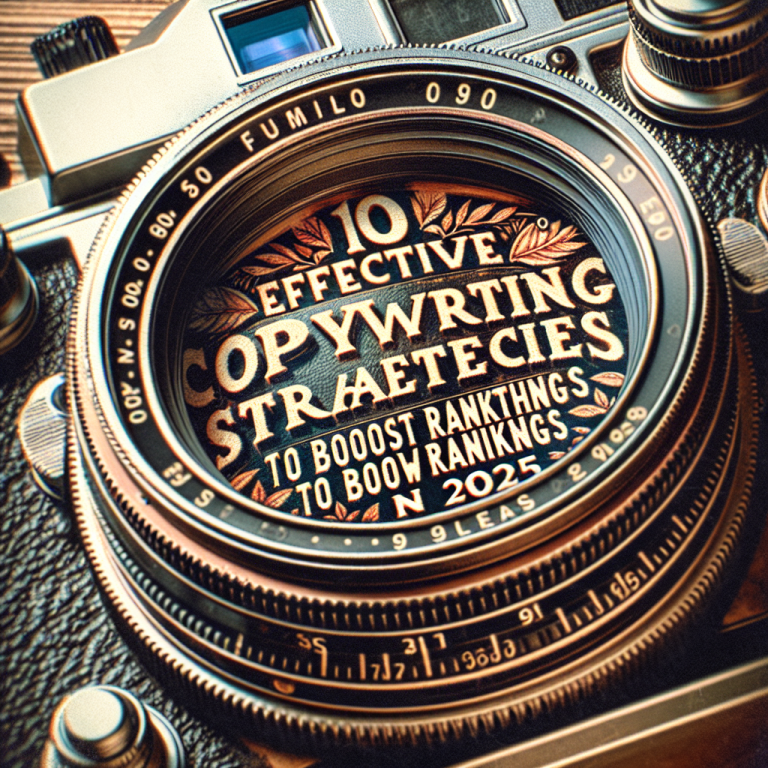10 Effective Writing Emotional Storytelling Ads Strategies for 2025
- 1. Prioritize Authenticity in Your Stories
- 2. Understand Your Audienceâs Emotional Triggers
- 3. Incorporate Powerful Visuals
- 4. Leverage User-Generated Content
- 5. Tell Personal and Relatable Stories
- 6. Create Suspense and Surprise Elements
- 7. Include Strong Calls-to-Action
- 8. Utilize Data and Statistics Effectively
- 9. Keep Stories Concise and Impactful
- 10. Test and Optimize Continuously
1. Prioritize Authenticity in Your Stories
Why Authenticity Matters
In 2025, audiences are more perceptive than ever. They can instantly detect inauthentic messages, which can harm your brandâs reputation. When writing emotional storytelling ads, authenticity isn’t just a nice-to-haveâit’s essential. Genuine stories resonate deeply, creating a lasting emotional bond with viewers.
Research shows that 86% of consumers say authenticity is a key factor in deciding which brands to trust. Therefore, sharing real experiences, customer stories, and honest narratives can significantly boost engagement. Authentic storytelling builds credibility and encourages emotional investment from your audience.
Practical Tips for Authentic Storytelling
To craft authentic stories, start by listening to your customersâ real experiences. Incorporate their voices and testimonials. Avoid over-dramatization; keep stories honest and relatable. Using real images and videos from actual consumers enhances authenticity and connects emotionally.
For example, Patagonia often shares genuine stories of environmental activism from their customers, which aligns with their values. This approach not only enhances authenticity but also strengthens customer loyalty.
2. Understand Your Audienceâs Emotional Triggers
Research Your Target Audience
Knowing what motivates your audience is fundamental in writing emotional storytelling ads. Conduct surveys, analyze social media interactions, and gather customer feedback to uncover their core values, passions, and pain points. The more you understand, the better you can craft stories that resonate emotionally.
Tools like Google Analytics and social listening platforms provide valuable insights into audience behavior and preferences. By identifying specific triggersâsuch as compassion, pride, or nostalgiaâyou can tailor your narratives for maximum impact.
Segment for Greater Impact
Not all audience segments respond to the same stories. Segment your audience based on demographics, interests, and behaviors. Create tailored emotional stories for each segment, addressing their unique needs and fears. Personalization increases relevance and emotional connection.
For instance, a charity might craft heartfelt stories about individual beneficiaries for different donor segments, increasing donation rates and engagement.
3. Incorporate Powerful Visuals
The Role of Visuals in Emotional Storytelling
Images and videos are crucial in writing emotional storytelling ads because they evoke feelings more immediately than words alone. In 2025, audiences expect high-quality visuals that complement the narrative and deepen the emotional impact.
Use visuals to show genuine emotions, such as joy, sorrow, or triumph. Authentic footage tends to perform better, fostering trust and empathy. Avoid stock images that seem staged or generic, as they can break the emotional connection.
Tips for Creating Impactful Visual Content
Invest in storytelling videos that feature real people and real stories. Use close-ups to capture genuine expressions. Incorporate colors, music, and pacing that reinforce the emotional tone.
For example, a nonprofit campaign might showcase a series of short clips of families helped by donations, accompanied by touching music that resonates emotionally.
4. Leverage User-Generated Content
Authentic Customer Stories
User-generated content (UGC) is a goldmine for writing emotional storytelling ads. It provides authentic narratives built by your customers themselves, which can be more compelling than brand-made stories. UGC builds credibility and emotional engagement.
Encourage your customers to share their stories via social media. Showcase these stories in your ads, website, and campaigns to create a community of authentic voices.
Benefits of UGC in Emotional Narratives
UGC often evokes higher trust levels because itâs perceived as honest and relatable. It helps your brand appear transparent and caring. Plus, it saves resources on content creation while still providing compelling stories.
For example, #ShareYourStory campaigns on Instagram have successfully humanized brands and created emotional bonds that last.
5. Tell Personal and Relatable Stories
Connecting Through Personal Narratives
Personal stories have a powerful emotional impact. When writing emotional storytelling ads, focus on individual journeys that your audience can relate to. Personal tales evoke empathy and inspire action.
Share stories of overcoming adversity, moments of kindness, or everyday heroism that align with your brand values. Making stories personal helps audiences see themselves in the narrative, fostering a deeper connection.
Case Examples and Practical Tips
Brands like Coca-Cola excel at telling personal stories that evoke nostalgia and happiness. To do this, highlight real experiences and emotions tied to your product or cause.
Tip: Use storytelling frameworks like the heroâs journey to structure compelling personal narratives that guide viewers emotionally.
6. Create Suspense and Surprise Elements
The Power of Suspense in Emotional Ads
Incorporating suspense and surprise keeps your audience engaged and eager to see what comes next. It enhances emotional investment and makes your storytelling memorable. A well-timed twist or reveal can evoke stronger feelings of joy, shock, or inspiration.
For example, teasing a story with a hint of mystery encourages viewers to stay tuned until the end. This strategy works well for social media campaigns and video ads.
Practical Strategies for Adding Surprise
Build anticipation by starting with a compelling question or problem. Then, deliver an unexpected resolution that highlights your brandâs values or solutions. Use music, pacing, and visuals effectively to escalate emotional tension.
Think about campaigns like Nike’s storytelling ads that often surprise viewers with unforeseen heroics or achievements.
7. Include Strong Calls-to-Action
Guiding Emotional Engagement Towards Action
A powerful story needs a compelling call-to-action (CTA). In emotional storytelling ads, your CTA should naturally emerge from the narrative, encouraging viewers to take meaningful stepsâlike donating, subscribing, or sharing.
Align your CTA with the emotional core of the story. For instance, a story about saving wildlife might end with âJoin us in protecting our planet today.â Emotions increase motivation, so make the CTA clear and heartfelt.
Tips for Crafting Effective CTAs
Use emotionally charged language and create urgency. Be specific about what you want your audience to do. Test different CTAs to see which resonates most with your viewers.
For example, “Help us make a differenceâyour support changes lives” appeals to both emotion and action.
8. Utilize Data and Statistics Effectively
Supporting Stories with Data
In 2025, data-backed storytelling adds credibility and strengthens emotional appeals. Incorporate relevant statistics and facts that support your narrative but do so in an engaging way.
For example, mentioning that â90% of recipients reported feeling more hopeful after watching our storiesâ combines emotion with proof. Data should supplement, not overshadow, the story.
Making Data Relatable
Transform raw data into human stories. Share specific examples or case studies that illustrate the impact of your work. Visualize data through infographics or animations to make them more emotionally engaging.
This blend of emotion and information creates compelling, credible stories that resonate.
9. Keep Stories Concise and Impactful
The Power of Brevity
In a fast-paced digital world, shorter stories often generate more emotional impact. Keep your writing emotional storytelling ads concise, focusing on a single, clear message or emotion.
Aim for clarity and emotional punch within 60-90 seconds for video ads or a few compelling paragraphs for written content. Short, powerful stories are more likely to be shared and remembered.
Structuring Impactful Stories
Use the ‘hook, story, conclusion’ framework: grab attention quickly, tell a relatable story, then end with a memorable emotional note or CTA. Avoid unnecessary details that dilute the emotion.
Emphasize authenticity and emotion over complexity for maximum effect.
10. Test and Optimize Continuously
A/B Testing for Emotional Impact
Regular testing of your storytelling ads is key in 2025. Use A/B testing to compare different narratives, visuals, and CTAs to determine what evokes the strongest emotional response.
Collect data on engagement metrics, emotional responses, and conversions. Use insights to refine and improve your stories continually.
Leveraging Analytics and Feedback
Monitor social media comments, surveys, and direct feedback to understand how your stories resonate emotionally. Adjust your content based on this data to stay relevant and impactful.
Consistency in optimizing your storytelling ads helps build a loyal, emotionally engaged audience over time.
Conclusion
Writing emotional storytelling ads is a powerful way to connect authentically with your audience in 2025. By applying these 10 strategies, you can craft narratives that evoke genuine emotions, build trust, and drive meaningful action. Remember, the key to successful emotional storytelling is authenticity, understanding your audience, and continuous improvement. Mastering these techniques will undoubtedly elevate your advertising game throughout 2025 and beyond.
Frequently Asked Questions
1. What is writing emotional storytelling ads?
Writing emotional storytelling ads involves creating compelling narratives that evoke genuine feelings to connect with viewers and inspire action. It combines storytelling techniques with emotional appeals to enhance engagement and brand loyalty.
2. How can I make my emotional storytelling ads more authentic?
Use real stories, customer testimonials, and genuine visuals. Avoid exaggerations and stay true to your brand values to build trust and authenticity.
3. Why is understanding your audience important in emotional storytelling?
Knowing your audience’s emotional triggers helps you craft stories that resonate deeply, increasing engagement, trust, and conversion rates.
4. How do I measure the success of my emotional storytelling ads?
Track engagement metrics, emotional responses, and conversions through analytics tools. Regularly test and refine your stories based on feedback to improve impact.
5. How often should I test and optimize my storytelling ads?
Continuously. Regular A/B testing and audience feedback collection help ensure your stories remain effective and emotionally resonant throughout 2025.










